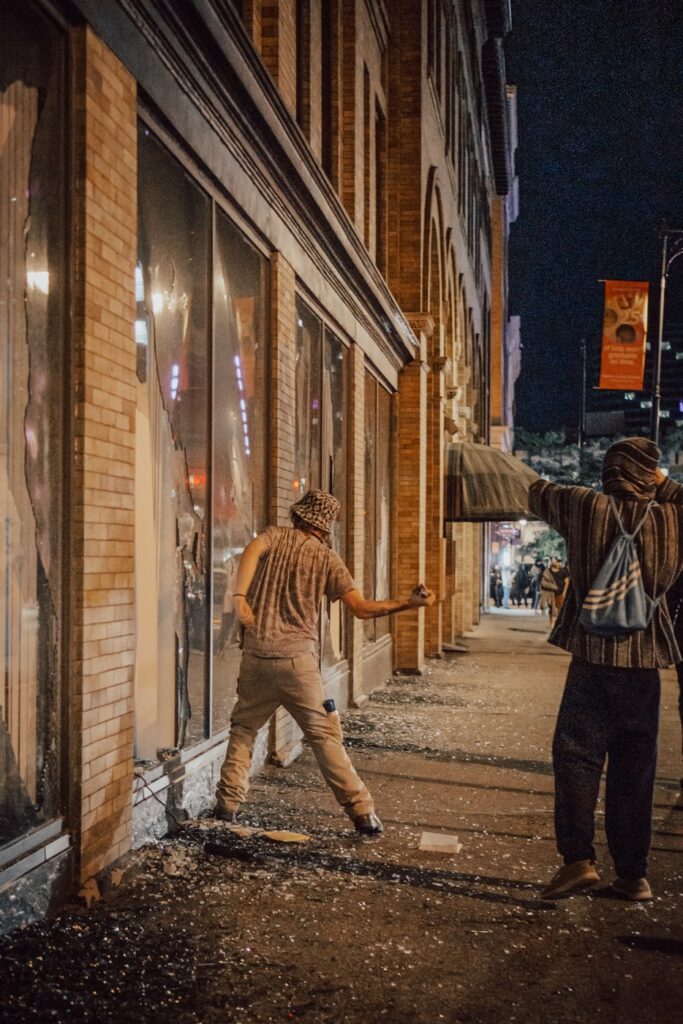
Protests, riots, and civil unrest are close to home for me again, with a weekend officer-involved shooting in Lancaster, Pennsylvania. Police responded on Sunday afternoon to that scariest of 911 calls: a domestic disturbance. Shortly after the first officer arrived, a man came out with a knife in hand – visible in body camera footage – and chased the officer, who fatally shot the man. Crowds gathered almost immediately at the scene and later, at the police station. There have been objects thrown, including bricks through windows, vandalism, and arson. They refused to disperse until the police started using pepper spray.
Lancaster isn’t an enormous city, with perhaps 60,000 residents, and it’s located in the middle of a rural area, an hour or so from Philadelphia and Harrisburg. It’s perhaps most well-known for the nearby Amish population. The population is diverse, only about 60% White, with the Hispanic, Latino, and Black populations combined equaling about 45% of the city’s people. Many families struggle with poverty. But it’s not really a hotbed for protests and the sort of racial tensions that make national news. It’s definitely not the kind of city that you often hear in the same breath as New York, Los Angeles, even Philadelphia or Minneapolis. And yet, here we are.
There are lessons to be learned here that can keep you safe. I’ve talked before about protesting safely, and having escape routes and other plans for leaving if a protest turns violent, but what if you’re not participating at all? You can still get caught up in the action, and then what?
As always, the best option is to not be where the violence is. This recent rioting in Lancaster shows us that living outside a major population center won’t necessarily keep you safe. Anywhere even a small crowd can gather has the potential to become dangerous. That’s helped along by many people living in close proximity, but don’t discount travelers, particularly near possible flashpoints like police stations, courthouses, or other government buildings, not to mention major roads. Retail centers can also be a danger zone, depending on how close or visible they are to those flashpoints. If you can avoid places like that, do so as much as possible when tensions are high.
Sometimes you absolutely need to be in places that can become potential problem areas. Maybe you live or work there, or you must travel through them to get to work or somewhere else necessary. In those cases, limit how long you’ll be in there and pay extra attention to who is around and what their activity feels like while you’re there. You might also try to schedule your visits by paying attention to local news or other resources to see if there is protest activity scheduled or happening there. If you can, stay indoors and away from or cover public-facing windows when you’re there. Not only will you be less visible from the outside, you’ll be further away from any potential objects thrown through them.
Locking the doors might seem obvious if you’re in a private residence, but did you also lock any screen/storm doors and windows? Have you considered closing any curtains and turning off the lights so it doesn’t look like you’re home? If it sounds like I’m telling you to prepare to hunker down, I am. Even if you can’t avoid the geographical area where it’s getting violent, you can still do your best to keep your immediate surroundings as safe as possible. That includes preventing people from getting inside. We’ve probably all seen protesters knocking on doors and demanding responses. You don’t have to open the door or engage with them. In fact, I recommend that you don’t. It’s going to be scary, but you want to keep as much as you can between them and you. If you have a home defense plan that includes weapons of any kind, take a moment today to review the legality of when you can use them and make sure that they’re staged and ready if you need them.
It’s possible that you may run into or get caught up with a crowd that becomes violent. Maybe it’s because you’re part of a protest that started peacefully; maybe you just weren’t paying attention to a shift in what was happening around you. For your personal safety, focus on getting away and getting to shelter. Any distance, and any physical barriers between you and trouble will help, even if it’s not ideal. That means moving to the back of stores or lobbies, leaving through service doors, even just getting a block or two over.
If you are in a car that is being blocked, think now about how it can become part of your escape plan. Strategies differ and range from driving slowly and inexorably through the crowd to flooring it and getting out as fast as possible. There are pros and cons to each but either way, you need to consider not only the legalities of picking one but whether or not you personally are willing and able to do it and face the legal, social, and moral consequences that might come with it. Similarly, if you carry weapons for self-defense and plan on using them as tools to help you get out, get beyond the Rambo mindset that you’ll blast away anyone in your path and really think hard about whether you will be physically capable and mentally willing to do so, and to pay the social media and criminal costs that might result.
Finally, remember that you cannot rely on the police or anyone else coming to save you, especially if they have to wade through a violent crowd to do it. It’s up to you to keep yourself safe.




